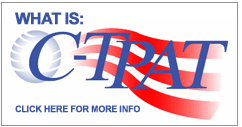In one confidential survey, nearly 25% of the companies responding revealed that they had been victimized by some type of fraud within the last 12 months. Thefts of intellectual property are on the rise as well. An estimate from one study puts that loss alone at more than $60 billion.
The old axiom that crime doesn’t pay has been repeatedly proven wrong. The truth of the matter is that crime does pay, and it pays quite well. To add insult to injury, the culprits oftentimes don’t pay any taxes like legitimate wage earners.
Theft of proprietary information, embezzlement, the misappropriation of company funds and vendor kickbacks are only some of the ways that white-collar criminals strike today.
It’s always difficult for top management to accept the idea that a high level colleague could be bilking their company. While it’s understandably difficult to face this reality, executives who go through denial oftentimes pay a high price for not at least considering the possibility that there could be a problem and looking into it.
Many CEO’s assume that their firms are protected from fraud because their financial professionals will uncover any type of impropriety. This however, is typically not the case. Accountants and auditors can only examine so much quantitative data. Additionally, financial experts are usually kept busy making sure that tax obligations are met, reports are prepared on time and bottom line numbers are balanced. If the white-collar criminal camouflages the fraud so it appears to be standard operating procedure, the chances of being caught are not very good.
This is best illustrated by one individual who had defrauded his company out of several hundred thousand dollars via a simple, yet effective scheme.
In his position, he had responsibility for approving invoices from an array of vendors for various goods and services. Once an invoice left his desk with his initials, it was processed for payment. His first step in the fraud was to set up a “shell,” i.e., a nonfunctioning company whose sole purpose was to be used for the scam. Next, he rented a mailing address in another city and established a local telephone number that forwarded calls to an answering machine at his home. The next step was to print up legitimate looking company invoices and envelopes.
He began forwarding invoices to his company for nonexistent financial and insurance consulting services. Initially, he treaded lightly, keeping the invoices relatively modest. However, after seeing that no one questioned the bills, he began increasing the amounts and sending them with greater frequency. Within 3 months, he was defrauding his firm out of more than $5,000 a week. This went on for more than two years before anyone even remotely suspected a problem.
Unfortunately, the opportunity to score big creates a great deal of temptation. These crimes occur more frequently than most realize. However, make no mistake. Companies are being victimized with alarming frequency and experts expect the problem to get worse.
Avoid this Critical Mistake if You Suspect Fraud in Your Company
Never confront a suspect unless you have strong evidence that they’ve committed the crime. Although the first inclination on the part of some CEO’s and CFO’s is to speak one on one with the co-worker, this is definitely not a good idea.
One senior vice president admitted that one of the biggest mistakes he ever made was to think that he’d elicit a remorseful confession from a purchasing executive by giving him the opportunity to cleanse his soul. After explaining why he suspected that the executive was guilty of accepting kickbacks, the senior vice president was shocked when the co-worker vehemently denied any wrongdoing. While the senior vice president had strong circumstantial evidence, he had not conducted a proper investigation and his facts were not complete or conclusive. The purchasing manager’s aggressive response forced the senior vice president to back pedal.
The company was subsequently unable to take decisive action because the senior vice president had decided to short cut the investigative process and prematurely confront the suspect. To make matters worse, the purchasing executive was then able to destroy evidence of his wrongdoing once he learned he was under suspicion.
When there are indications of fraud, conduct a thorough investigation. The objective is to develop enough factual evidence so that an unbiased determination can be made as to whether there was unethical and/or illegal conduct. Always keep in mind that the burden of proof is on the company to show guilt, not on an employee to prove their innocence.



